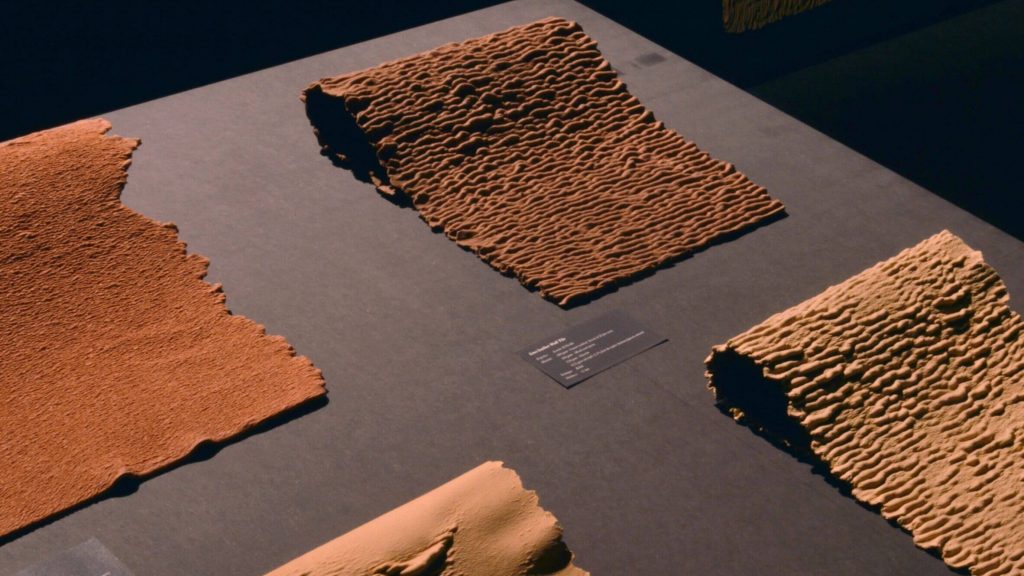Designer Don Kwaning has created a material that mimics leather but is entirely vegan, architecture and design magazine Dezeen reports.
Called Lino Leather, as the name suggests, the material is made from linoleum, commonly used as flooring. Kwaning, who specializes in finding creative ways to use natural materials, teamed up with flooring manufacturer Forbo to generate new methods to treat linoleum to make it more versatile.
The Lino Leather comes in two forms. The first type, which is thicker than the other, is similar to rumen leather, usually made from a cow’s stomach. Kwaning has used this material, which has folds and a honeycomb structure, for wall panelling that has acoustic dampening properties, Dezeen reports.
The second Lino Leather kind is softer, closely replicating saddle leather, and could be used widely in commercial settings.
The materials are double-sided, unlike linoleum flooring. To do this, Kwaning placed the textile backing that is usually needed to stabilize linoleum in between two layers of his vegan leather. He believes it could be used in furniture design and upholstery.
According to Kwaning, linoleum, which has existed for more than 100 years, is an “overlooked material” with “great future potential.”
“Many people don’t even know it’s made from only natural materials,” he added.

Linoleum is made from plant-based oils and resins combined with minerals or fine powders, like ground cork. It is then placed onto a textile backing, like canvas, and tinted various colours.
“I took out all the pigments to give the material more depth, which also gives the Linoleum Leather a more natural look since the materials that it is made from show in the colour,” Kwaning told Dezeen. “The colours that you see are the colours of the wood-flour which is one of the Linoleum Leather components.”
“I like projects that aim to change the industry by introducing new ecological substitutes for existing materials that are toxic or harm animals,” Kwaning said. He has also used wetland weed to make furniture and packing.
Kwaning joins other innovators using vegan materials to craft cruelty-free leather. Hugo Boss uses pineapple to make leather men’s shoes, coconut water has been used to make leather-style handbags, and rugs made from palm leaves could replace cow-hide leather carpeting. German sneaker brand nat-2 uses coffee grounds to make leather shoes – they even smell like coffee.
The vegan leather industry is only becoming more popular, with the market set to be worth $85 billion by 2025.
Image Credit: Don Kwaning | Dezeen


